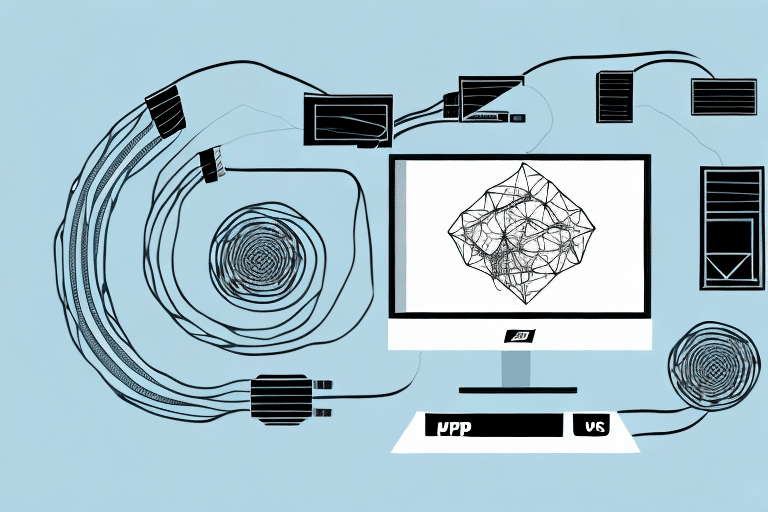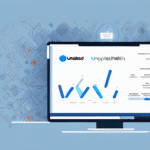How to Connect, Optimize, and Manage Your UPS for Unleashed
If your business relies on a Wi-Fi network, maintaining uptime is critical. Any downtime can negatively impact your operations, customer satisfaction, and revenue. An Uninterruptible Power Supply (UPS) plays a vital role in protecting your network devices from power outages or disruptions. This guide provides an in-depth analysis of connecting, optimizing, and managing your UPS to ensure uninterrupted network performance.
Understanding the Importance of UPS in Maintaining Network Uptime
Protection Against Power Outages
Power outages can occur due to extreme weather conditions, human errors, electrical faults, or other unforeseen circumstances. According to a report by Statista, the average cost of data center downtime is approximately $740,000 per hour. A UPS safeguards your network devices during such events, preventing data loss and ensuring business continuity.
Stabilizing Power Supply
Fluctuations in power supply can cause significant damage to your device's hardware. A UPS regulates the power flow, ensuring that your network equipment receives a consistent and stable electricity supply. This regulation helps in prolonging the lifespan of your hardware and reducing maintenance costs.
Cost Savings and Productivity
Investing in a UPS can lead to substantial cost savings by minimizing downtime-related losses. According to IBM, unplanned downtime can result in lost productivity, missed deadlines, and dissatisfied customers. A UPS ensures that your business operations continue smoothly, even during unexpected power disruptions.
Connecting and Configuring Your UPS
Choosing a Compatible UPS
Selecting a UPS device compatible with your network setup is the first step. Consider factors such as power capacity, battery runtime, and the number of devices to be connected. Refer to the APC UPS Calculator to determine the appropriate UPS for your needs.
Step-by-Step Connection Guide
- Connect the UPS to a reliable power source using the provided power cable.
- Plug your network devices into the UPS's battery-backed outlets.
- Use a USB or network port to connect the UPS to your primary device for monitoring and management.
- Ensure all connections are secure and verify compatibility through the product's user manual.
Configuration and Testing
After connecting your UPS, configure the settings using the management software provided by the UPS manufacturer. Test the setup by simulating a power outage to ensure that the UPS switches to battery power seamlessly. Regular testing helps in identifying and troubleshooting potential issues early.
Optimizing and Maintaining Your UPS
Battery Maintenance
Regularly check the UPS battery status and replace it as needed. Most UPS systems have indicators or management software that alert you when the battery needs replacement. Maintaining a healthy battery ensures that the UPS functions effectively during power outages.
UPS Placement
Place the UPS in a cool, dry location away from direct sunlight and heat sources. Proper placement helps in preventing overheating, which can degrade the battery and reduce the UPS's lifespan. Ensure that the UPS is in a well-ventilated area to facilitate efficient cooling.
Automated Power-Fail Shutdowns
Configure automated shutdowns to save battery life while allowing sufficient time to safely power down your network devices. This feature prevents abrupt shutdowns, ensuring data integrity and protecting hardware from potential damage.
Troubleshooting and Managing Your UPS
Common Issues and Fixes
- Device Not Detected: Recheck compatibility and connection methods. Try different USB ports or cables.
- Battery Charging Issues: Ensure the battery is correctly installed and compatible. Check the battery age and replace if necessary.
- Beeping or Alarms: Refer to the product manual for troubleshooting steps or perform a device reset.
- Power Overload: Disconnect unnecessary devices or upgrade to a higher capacity UPS.
Management Tips and Best Practices
Regularly monitor the UPS's performance using its management software. Set up alerts for low battery, power failures, and other critical events. Ensure that the UPS firmware and software are up-to-date to benefit from the latest features and security patches.
Monitoring and Alerts
Utilize advanced management tools that offer remote monitoring and control. These tools can provide real-time insights into your UPS's status, enabling proactive management and swift responses to any issues.
Choosing the Right UPS for Your Setup
Power Requirements Calculation
Calculate the total power requirements of your network devices to select a UPS with adequate capacity. Use online tools like the APC UPS Calculator to determine the appropriate size.
Battery Types: Lead-Acid vs. Lithium-Ion
UPS systems typically use either lead-acid or lithium-ion batteries. Lead-acid batteries are more affordable but have a shorter lifespan and require regular maintenance. Lithium-ion batteries are more expensive upfront but offer longer lifespans and require less maintenance, making them a cost-effective choice in the long run.
Size and Weight Considerations
Consider the physical dimensions and weight of the UPS, especially if space is limited in your setup. Some UPS models are designed to be compact and lightweight, facilitating easy installation and mobility.
Advanced Features and Future-Proofing Your UPS Strategy
Advanced Settings and Features
Modern UPS systems come with advanced features such as automated power shutdowns, real-time battery monitoring, remote management via apps and software, and customizable alerts. These features enhance the usability and reliability of your UPS.
Future-Proof Power Management
Select a UPS that supports scalability and future upgrades. As your business grows, your power requirements may increase, and a scalable UPS ensures that you can accommodate these changes without significant additional investments.
Conclusion
Connecting, optimizing, and managing a UPS is essential for businesses that rely on uninterrupted network operations. By following the best practices and tips outlined in this guide, you can ensure that your UPS provides effective backup during emergencies, prolongs battery life, and operates efficiently during power disruptions. Implementing a robust UPS strategy not only safeguards your equipment and data but also ensures business continuity and resilience against unforeseen power outages.




















